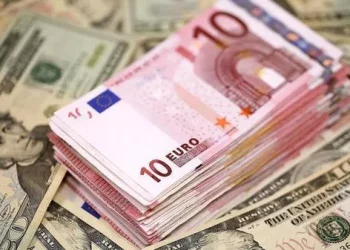The currency of Thailand, known as the Thai baht (THB), is one of the most recognized and widely used currencies in Southeast Asia. As Thailand’s official currency, the baht plays a central role in its economy, with various denominations of banknotes and coins circulating throughout the country. From bustling markets to high-end hotels, the Thai baht is an essential part of everyday transactions.
The Thai baht is issued and regulated by the Bank of Thailand (BOT), which ensures the proper circulation and integrity of the country’s monetary system. Among the most commonly used currency denominations are banknotes, ranging from small bills that facilitate day-to-day transactions to larger denominations used for higher-value exchanges.
In this article, we will explore the highest value banknote in circulation in Thailand, its historical context, design elements, and the role it plays in the Thai economy. By understanding the significance of this bill, readers will gain a deeper appreciation for Thailand’s financial landscape.
Historical Context: The Evolution of Thai Baht Banknotes
To understand what makes the highest bill in Thai baht so significant, it’s important to first look at the history of Thai currency. The Thai baht has undergone numerous changes throughout the centuries, with different forms of currency being introduced to facilitate trade, both within Thailand and with foreign nations.
The Early Days of Thai Currency
Before the modern baht was established, Thailand used a variety of trade systems and forms of money. The Siamese riel was used during the early years, while Chinese silver dollars were also common. In 1888, King Chulalongkorn (Rama V) introduced the modern Thai baht system, based on the metric system, which helped standardize the country’s financial transactions.
This move was part of a broader push to modernize the country’s economy and align Thailand with Western monetary standards. The introduction of paper banknotes in Thailand came in the early 20th century, marking a shift from physical commodities like gold and silver to fiat currency. The Bank of Thailand, which was established in 1942, became responsible for issuing and regulating the country’s banknotes.
The Role of the Bank of Thailand (BOT)
The Bank of Thailand plays an important role in managing the country’s financial system, overseeing the issuance of Thai baht banknotes, and maintaining monetary policy. Over time, the bank has introduced several series of banknotes, each featuring distinctive designs that reflect Thailand’s rich history, culture, and political figures. These banknotes help to promote national pride and strengthen the bond between the government and the citizens.
What is the Highest Bill in Thai Baht?
Now, let’s address the central question: What is the highest value banknote in circulation in Thailand?
The highest bill in Thai baht is the 1,000-baht note. While there are higher-value bills that have been issued in the past, such as 5,000 baht and 10,000 baht notes, these denominations have largely been withdrawn from circulation. The 1,000-baht note is currently the highest denomination used in everyday transactions.
The 1,000-Baht Banknote
The 1,000-baht bill is widely used for larger purchases, such as high-end consumer goods, rent, or hotel bills, and is also commonly seen in business transactions. It is issued in the Bank of Thailand’s most recent series of banknotes, which was first introduced in 2018. This series is known as the Series 16 banknotes and features updated security features, new designs, and modern printing techniques to prevent counterfeiting and ensure the integrity of the currency.
Design and Features of the 1,000-Baht Banknote
The 1,000-baht note is characterized by its vibrant and intricate design, showcasing prominent figures from Thai history. Here’s a breakdown of the design features of the 1,000-baht note:
Portrait of King Bhumibol Adulyadej (Rama IX): The most prominent feature on the 1,000-baht note is the portrait of King Bhumibol Adulyadej, Thailand’s beloved monarch who reigned from 1946 until his passing in 2016. His image is featured on the front of the bill, symbolizing respect and reverence for his contributions to the nation.
Watermark: A security feature that helps prevent counterfeiting, the watermark of King Bhumibol Adulyadej is visible when the note is held up to the light.
Security Thread: The bill is equipped with a security thread, which is a metallic strip embedded in the note. This strip features the denomination and can be seen when the note is held up to the light.
Holographic Elements: To increase security and reduce the risk of counterfeit production, the bill also incorporates holographic features, including a shimmering 1,000-baht symbol that changes color when the note is tilted.
Back of the Banknote: The reverse side of the 1,000-baht bill features an image of the Chakri Maha Prasat Throne Hall within the Grand Palace in Bangkok. This iconic building is an architectural marvel and an important symbol of Thailand’s monarchy and governance.
Color Scheme and Artistic Elements: The color scheme of the 1,000-baht note consists of a blend of purple, pink, and blue, with intricate designs of traditional Thai motifs woven throughout the note. These elements pay homage to Thailand’s artistic heritage and cultural identity.
Significance of the 1,000-Baht Banknote
The 1,000-baht note is an important symbol of Thailand’s economic status. As the highest denomination currently in circulation, it reflects both the country’s prosperity and the need for higher-value bills for large transactions. Despite its high value, the 1,000-baht note is used frequently in daily life and is accepted across a wide range of establishments, from local businesses to international hotels.
It is also worth noting that the 1,000-baht note is considered a relatively high-value bill in Thailand compared to the average income level. This has led to the widespread use of smaller denominations, such as the 20-baht, 50-baht, and 100-baht bills, for more common transactions.
Banknotes and Economic Implications
The issuance of high-denomination banknotes like the 1,000-baht bill has a range of economic implications. These include aspects of monetary policy, inflation control, and the management of cash circulation.
Impact on Inflation and Economic Stability
The introduction of higher-value banknotes can help to reduce the physical volume of cash in circulation. This is particularly useful in countries with high inflation rates, where large amounts of currency are needed for everyday transactions. By issuing larger bills, the central bank can ensure that the cash economy functions efficiently, reducing the need for individuals and businesses to carry large quantities of lower-denomination bills.
Thailand has maintained relatively stable inflation rates in recent decades, and the circulation of 1,000-baht notes is a reflection of the country’s stable economy. The value of the baht relative to other currencies, such as the US dollar or the euro, plays a critical role in Thailand’s financial policies and exchange rates.
The Role of the Bank of Thailand in Currency Management
The Bank of Thailand uses a variety of tools to manage the supply of currency in circulation. By controlling the issuance of banknotes, the central bank can influence economic conditions such as interest rates and inflation. The Bank of Thailand also works to ensure that its currency remains secure and resistant to counterfeiting, which is why high-security features are embedded in modern Thai banknotes.
Conclusion
The highest banknote in Thai baht, the 1,000-baht note, serves as a critical element of the country’s currency system. It symbolizes both the stability of Thailand’s economy and the practicality of using high-value banknotes in a fast-paced and globalized market. The design of the 1,000-baht bill reflects Thailand’s cultural heritage and the importance of the monarchy, while its security features ensure its protection against fraud.
As Thailand continues to grow as an economic powerhouse in Southeast Asia, the role of the 1,000-baht note, along with other denominations, will continue to evolve. Whether used for large transactions or in everyday purchases, the 1,000-baht bill remains an essential part of Thailand’s financial infrastructure.
Understanding the significance of this note provides valuable insights into the broader dynamics of currency management, inflation, and the role of central banks in maintaining economic stability.
Related Topics:























